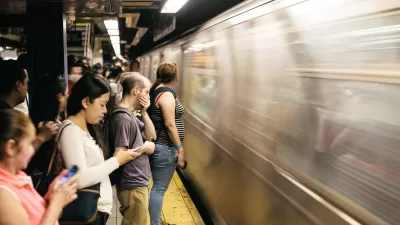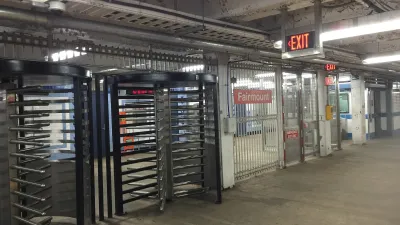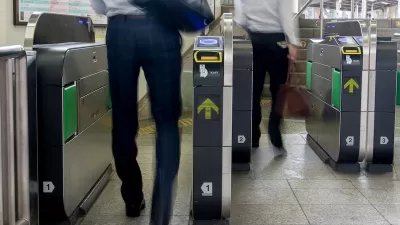Contrary to popular assumptions, public transportation has far lower crash and crime rates than automobile travel. For safer communities, improve and encourage transit travel.
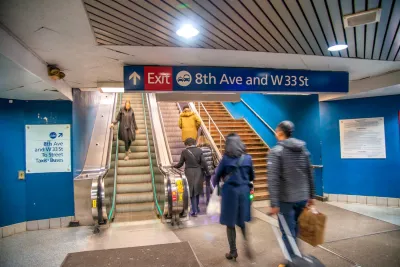
A new Scientific American article shows the much lower crash and crime rates of public transit travel compared with driving. “According to the data, driving a car in the U.S. is far more dangerous than taking public transit—in terms of crash risk and crime.”
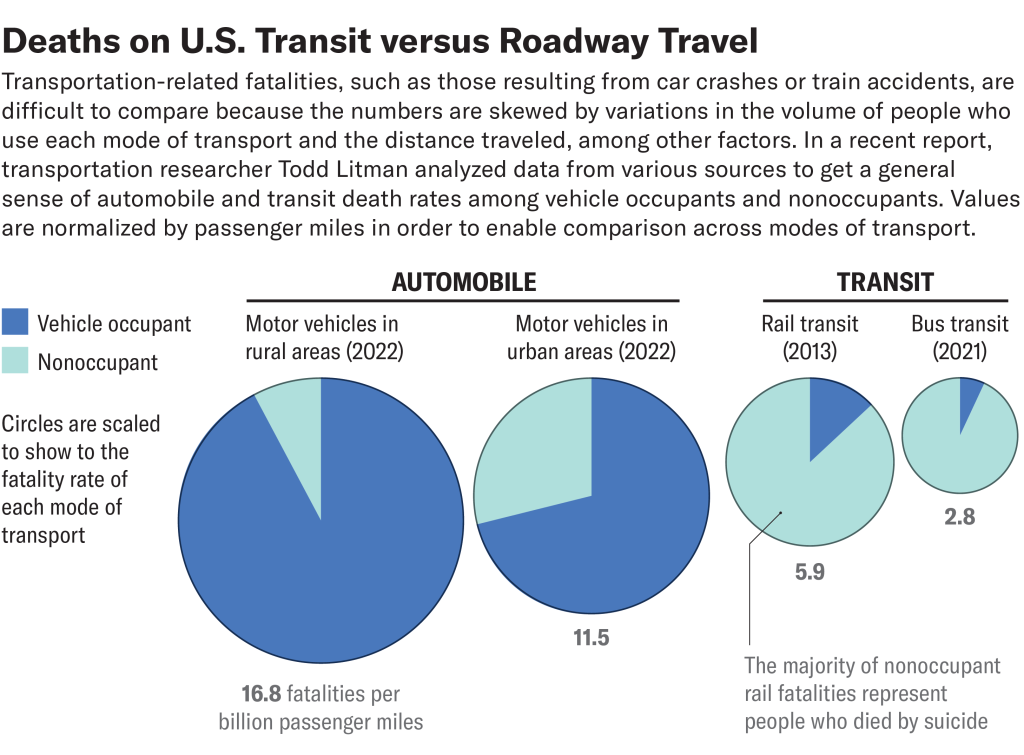
“Public transit travel requires people to travel with strangers in a confined space, and especially in large cities with very diverse populations, it’s easy to feel intimidated by that experience,” says Todd Litman, founder and executive director of the Victoria Transport Policy Institute in British Columbia, who has published numerous studies on public transit safety. “Just from an experiential perspective, it feels unsafe, especially to people who don’t do it frequently.” Litman calls this dread: fearing a risk despite it having a low probability.
According to Litman, the risk of death or injury on public transit is about one tenth that of car travel. “And neighborhoods oriented more around public transit have about one fifth the overall traffic deaths per capita of car-oriented neighborhoods.”
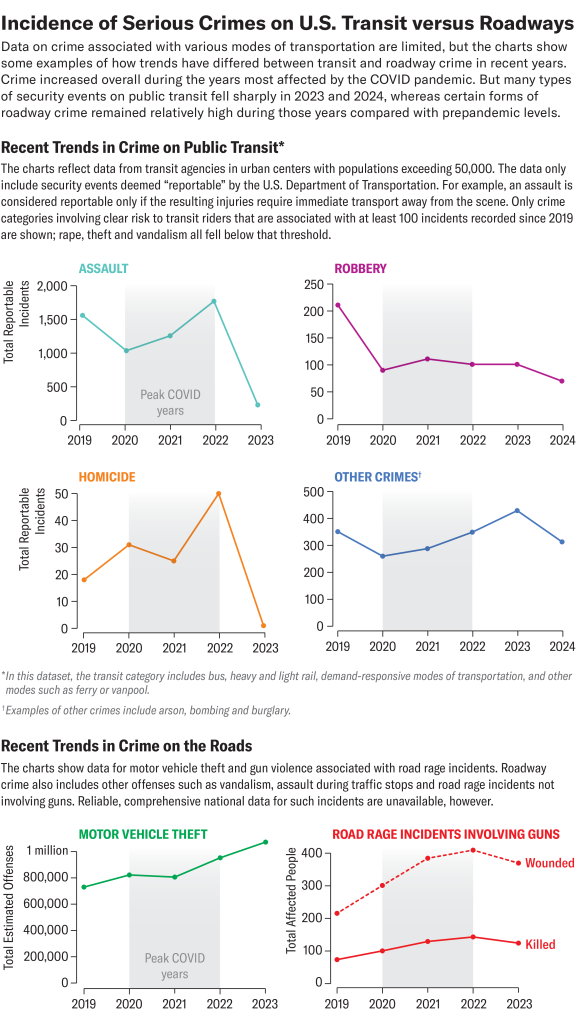
FULL STORY: These Charts Explain Why Public Transit Is Safer Than Driving

Maui's Vacation Rental Debate Turns Ugly
Verbal attacks, misinformation campaigns and fistfights plague a high-stakes debate to convert thousands of vacation rentals into long-term housing.

Planetizen Federal Action Tracker
A weekly monitor of how Trump’s orders and actions are impacting planners and planning in America.

Chicago’s Ghost Rails
Just beneath the surface of the modern city lie the remnants of its expansive early 20th-century streetcar system.

Bend, Oregon Zoning Reforms Prioritize Small-Scale Housing
The city altered its zoning code to allow multi-family housing and eliminated parking mandates citywide.

Amtrak Cutting Jobs, Funding to High-Speed Rail
The agency plans to cut 10 percent of its workforce and has confirmed it will not fund new high-speed rail projects.

LA Denies Basic Services to Unhoused Residents
The city has repeatedly failed to respond to requests for trash pickup at encampment sites, and eliminated a program that provided mobile showers and toilets.
Urban Design for Planners 1: Software Tools
This six-course series explores essential urban design concepts using open source software and equips planners with the tools they need to participate fully in the urban design process.
Planning for Universal Design
Learn the tools for implementing Universal Design in planning regulations.
planning NEXT
Appalachian Highlands Housing Partners
Mpact (founded as Rail~Volution)
City of Camden Redevelopment Agency
City of Astoria
City of Portland
City of Laramie


























